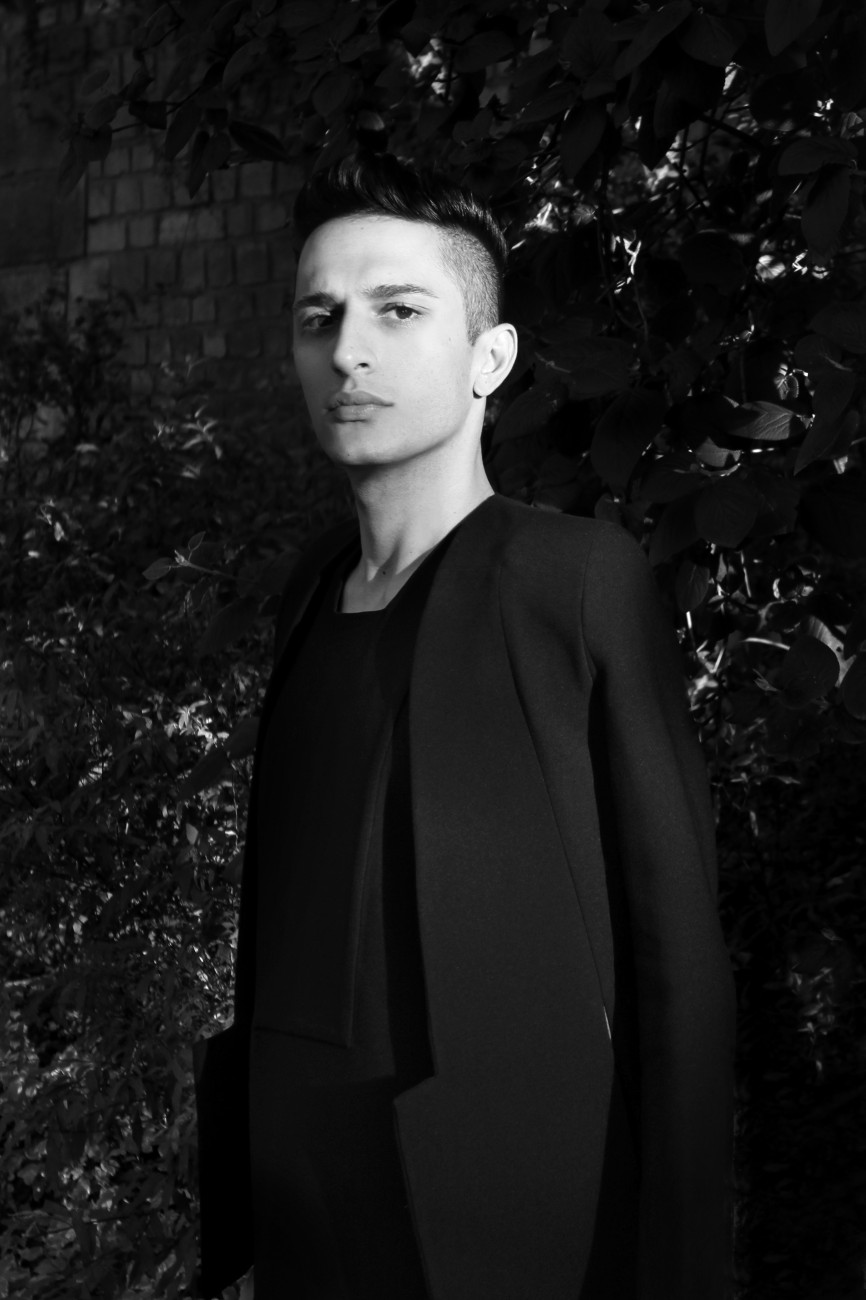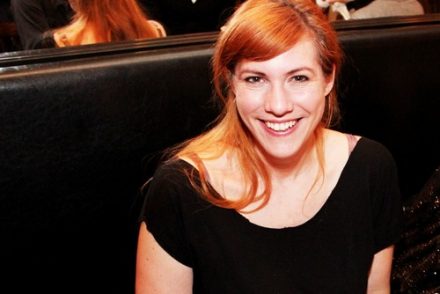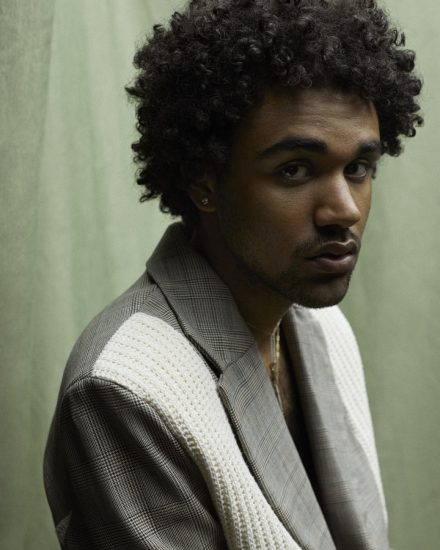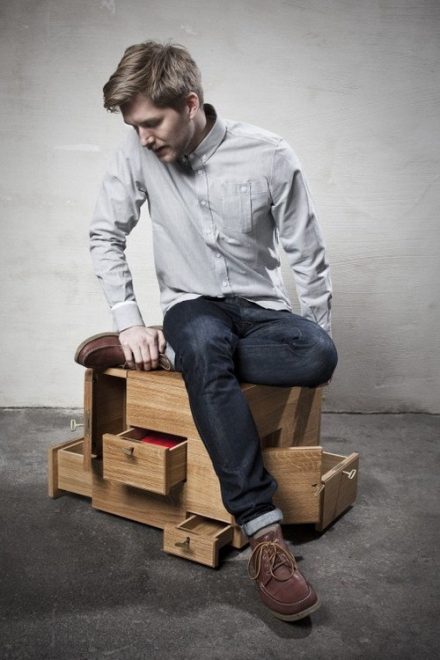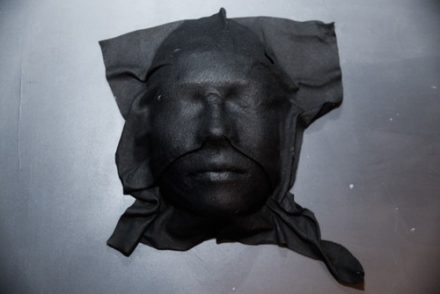
Rad Hourani has had one of those career starts that young designers can only dream of. Back in 2007, the 31 year old Canadian designer astounded the fashion world with his first collection in Paris. Almost instantaneously, buyers lined up and the press rallied behind the fashion phenom whose collection introduced a new elegance that was both radical and classic, and above all, accessible to all genders. Seven years later, Rad Hourani is still turning the fashion world on its head. As the first designer to ever present a unisex haute couture collection in Paris, he brings a dramatically fresh breath of modernity to the old art.
When Oukan welcomed the young designer to inaugurate his self-curated exhibition “5 Years of Unisex” in its store earlier this month, I had the opportunity to speak to Rad Hourani first hand to discuss his art and vision.
Phuong: Can you remember when you first became interested in making garments?
RH: I’ve always been attracted to aesthetics in general–not just clothes, but everything in life that is related to it. It started in Paris in my apartment 8 years ago when I decided to create a wardrobe for myself. I used to shop a lot and there was always something about the clothes that was not completely what I was looking for. I see clothes as a form of expression–the way we dress is very much related to who we are and how we feel and how we move. I kind of observed myself and tried to understand how I am, how I see the world and how I see life in general; and I realized that I couldn’t understand the codes of women’s dressing and men’s dressing. I was shopping in the women’s section, but the shapes were too round, too short, and too petite for me; yet the fabrics were nice and the finishings were nice and more refined than men’s clothes. With men’s clothes I liked some of the shapes, but the fabric or fit was not what I was looking for. So I said to myself, why aren’t there clothes for any gender and any age? I also tried to observe men and women of a certain age and I questioned these codes they followed. Who told them they had to do this? I said to myself that I would invest my money in my own collection so that I would have exactly what I’m looking for. My friend saw my first collection and she showed it to another friend who had a gallery. She offered me the gallery to do my show and I said “ok”. Then these influential buyers started taking orders that first week. It was a very organic process and an honest way of doing things. I didn’t set out to become a designer or to be in fashion.
Phuong: How did word get out after this gallery show?
RH: There were not many people at the show–50 people. I was not even on the official calendar. Somebody posted something on a website and then another person and then another person and Condé Nast placed me in their top 10 upcoming designer list. All of this was not expected. I had no idea what it was about and I had no idea about any of these things. There were few people who came to the show, but some were key people. I did it without knowing that they were there. I think it comes down to energy; I believe in putting your energy into things and in putting your best into what you do. Its also helpful to have some contacts of people who can circulate your message.
Phuong: Yes and in some ways, its inexplicable to people. It grew in this organic way and basically went viral in its own way.
RH: A lot of people when this first started were thinking, “oh maybe his family has oil” and there were rumors of things that made absolutely no sense. I don’t come from a backer. I just work night and day to build what I do today. Even these people who had worked for big names started applying with us. I think they thought we work out of this huge building (laughs). Today I’m really happy with our team and the way we do things. The beginning was really built from nothing. It was my little apartment in paris and sketching from there. It definitely came from hard work, hard work and hard work.
Phuong: And when this all happened it was all so sudden and you were basically your own team. How did you go about bringing other people into your own circle?
RH: It was extremely difficult because I am definitely a control freak (laughs). I am definitely a perfectionist; it is not easy to work with me and I do not delegate easily. For the first two years I did everything myself, including the graphic design and the invitation design, my website, my labels. For me to start delegating, it was extremely difficult. I got lucky to get more people who were really efficient; now my team is very well trained. I have a language that I’d like them to speak—I have a way of communicating a message and a way of branding everything and for me to let just anyone come in was very hard. Today I cannot do what I do without my team- it would be impossible to manage it all by myself. I really happy and proud of them.
Phuong: Going back to my first question, you talked about how you initially started designing to create garments for yourself. Do you ever create something for yourself where you think it doesn’t fit well to the female form and ultimately have to revise the idea to maintain the gender neutrality?
RH: Not really. The reason why is because before I started my first collection, I took a year to understand and observe a man’s body and a woman’s body and its what I call unisex anatomy–how different types of body are built and how they move. There are some bodies that are more androgynous, masculine, feminine, curvy, tall, and short and I really took this year to build up one canvas with unisex patterns. I tested it on many types of bodies and ages and gender. I observed it in movement and it help me construct the base of my clothes. I rebuild it differently. The lines may change but the canvas remains the same.
Phuong: What’s the most important thing you’ve discovered about yourself through your design?
RH: The most important thing I’ve discovered about myself is that I really do what I do for myself. You really have to do it with your own judgement and to not exist in the eye of the other. I am just an energy that circulates and I can block it or circulate it. I think we are definitely the same in some way. I believe I am everyone and everyone is me and there’s this connection. We just come from different backgrounds and cultures and beliefs, but I try to erase these limits that separate people. At the end of the day, I believe the base of humans are the same.
Phuong: You’ve talked about the power of observation in your work. What are you observing and are your designs a response to a specific external stimulus?
RH: When I design, if we’re talking about the process of making a shape, I think that’s more of an organic process that is always based on comfort, simplicity and complexity at the same time. Is it related to the outside world? Definitely. It’s about erasing limitation, separation, and beliefs that keep you from evolving. That’s what I try to translate into my clothes; they express a freedom. One thing that is super important to me is that I want it to remain timeless in, say, 10 or 20 years. I’m not interested in fashion or trends or being the it designer.
Phuong: It’s interesting that you mention the word timeless. Lots of designers reference this and there’s a lot of ambition out there to create something that stands the test of time; yet in fashion, there’s always a need to anticipate what’s coming next and what’s new. I want to know, are you paying attention to what’s happening in the fashion world? If so, to what and to whom?
RH: I’m really not interested in the fashion world. I think fashion is a recycling machine of trends and money–that’s not what I’m interested in. I’m interested in constructing a language–the same way you construct a book or tell a story. It’s not a different story each season; it’s a continuation and evolution of a story. The story will always be the same for me. Two days ago, I went to the Louis Vuitton show cause I have respect for Nicolas Ghesquière’s innovation with fabrics. I made the effort to go, but I was SO late! I was stuck in traffic and I was the last one to enter the space! I saw so many people who didn’t look happy and didn’t look like they were wearing what they want. They just wanted to be seen. It was a pleasure to be invited, but the next time I go to show…that might be in ten years (laughs).
Phuong: As you’ve mentioned, fashion is a huge money making machine and a business. Do you feel that you’ve had to make more and more compromises due to the commercial realities of the business throughout the years?
RH: What I love about what I do is that I don’t compromise. I evolve within myself, but I do not compromise. If you’ve seen the photos of the collections in the last 5 years—it’s really a continuation from collection to collection. I’m very proud of this. Each collection has a timelessness to it.
Phuong: Yes, there’s a uniformity that is very much in your handwriting.
RH: Yes, that for me is the most difficult thing to do, but it’s the most important thing.
* Designer portrait taken by Eisaku Minakata
